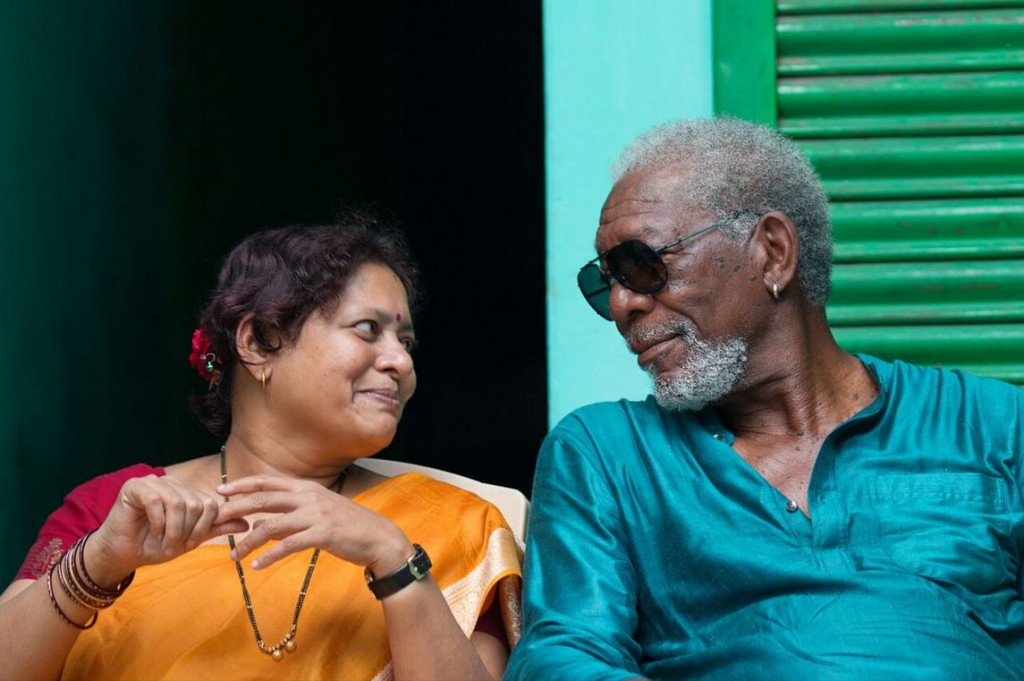April 20, 2016 by
This week’s episode (airing Sunday the 24th), brings us face to face with the question of creation. As Morgan Freeman muses at the beginning, walking through his own history in Mississippi, “You can’t understand me without understanding where I was created.”
“Every religion has a creation story,” he continues.
But is that true?
The episode doesn’t cover my area of specialization, Buddhism, but it does cover Hinduism. And the other religious stories of creation, including those of Islam, Australian Aboriginals, Catholics, and Mayans, all tend to inspire at least some sense of awe in this modern skeptical Buddhist. The fact that so many people looked in wonder at the stars in humanity’s past, deriving from these stars and their experiences of them such incredible and intricate tales brings, I hope, a sense of connectedness and humility to the modern viewer.
In Hinduism we find the Rig Veda, in which there are numerous hymns of creation. As Wendy Doniger writes:
In Hinduism we find the Rig Veda, in which there are numerous hymns of creation. As Wendy Doniger writes:
The Rig Veda refers glancingly to many different theories of creation. Several of these regard creation as the result – often apparently a mere by-product – of a cosmic battle, such as those mentioned in the hymns to Indra, or as a result of the apparently unmotivated act of separating heaven and earth, an act attributed to several different gods. These aspects of creation are woven in and out of the hymns in the older parts of the Rig Veda, books 2 through 9. But in the subsequent tenth book we encounter for the first time hymns that are entirely devoted to speculations on the origins of the cosmos.Some of these hymns seek the origins of the existence of existence itself (10.129) or of the creator himself (10.121). Others speculate upon the sacrifice as the origin of the earth and the people in it (10.90), or upon the origins of the sacrifice (10.130, 10.190). Sacrifice is central to many concepts of creation, particularly to those explicitly linked to sacrificial gods or instruments, but it also appears as a supplement to other forms of creation such as sculpture (10.81-2) or anthropomorphic birth (10.72).
The most famous hymn is probably 10.129, which reads (emphasis added):
1 There was neither non-existence nor existence then; there was neither the realm of space nor the sky which is beyond. What stirred? Where? In whose protection? Was there water, bottomlessly deep?2 There was neither death nor immortality then. There was no distinguishing sign of night nor of day. That one breathed, windless, by its own impulse. Other than that there was nothing beyond.3 Darkness was hidden by darkness in the beginning; with no distinguishing sign, all this was water. The life force that was covered with emptiness, that one arose through the power of heat.4 Desire came upon that one in the beginning ; that was the first seed of mind. Poets seeking in their heart with wisdom found the bond of existence in non-existence.5 Their cord was extended across. Was there below? Was there above? There were seed-placers; there were powers. There was impulse beneath; there was giving-forth above.6 Who really knows? Who will here proclaim it? Whence was it produced? Whence is this creation? The gods came afterwards, with the creation of this universe. Who then knows whence it has arisen?7 Whence this creation has arisen – perhaps it formed itself, or perhaps it did not – the one who looks down on it, in the highest heaven, only he knows – or perhaps he does not know.
Perhaps creation created itself, perhaps it didn’t. Perhaps God knows. Eh, maybe not.
Buddhism has it’s own sort of creation story, the Aggañña sutta, or “Discourse on the Origins.”
However, the Aggañña sutta follows Hinduisms use of creation myths to tell moral stories; though this time not around themes of sacrifice or intellectual humility, but instead about the dangers of greed. The Discourse has all of the ingredients of a creation myth though, and no doubt many Buddhists over history have interpreted it as simply this. It begins with a world-contraction; apparently out of a vast, ethereal state in which beings were mind-made, feeding on joy, self-radiant, etc.
Eventually this contraction leads to a watery, dark mass, in which there is no moon or sun and beings without gender. However, a sweet substance coats the water and the beings take a taste of this substance. Craving arises.
Craving (or thirst – Pali: taṇhā) is the first of the three roots of immorality in Buddhism, along with aversion and ignorance.
Out of this new activity, day and night begin, as well as the seasons; and beings’ bodies become coarser and individuated – there is beauty and ugliness and with them pride and arrogance.
The story continues until beings resemble us, with all of our negative traits including our societies and social structures meant to curb or at least direct cravings and aversions. All beings fall into place, all caught up in ignorance and needing the education and eventual awakening offered only by a Buddha.
The story contrasts the beings of and in society, right up to the secular king, to the Awakened one himself, setting his awakened wisdom above that of even the greatest king. As I wrote in my Ph.D. thesis, “The sutta is a morality tale wrapped in a cosmogony.”
Yes, it’s a creation myth. But it’s really something bigger than that. I’m sure this is true of other religious myths as well. There is always the “kid” level of interpretation, then the “teenager” level, the “adult” level, and finally something a bit beyond that, something a little esoteric, perhaps mystical, something, as Stanley Tambiah wrote of this sutta, “larger in scope and superior” to all that has come before.
Check your listings for air times on the National Geographic Channel or visit their website.

No comments:
Post a Comment